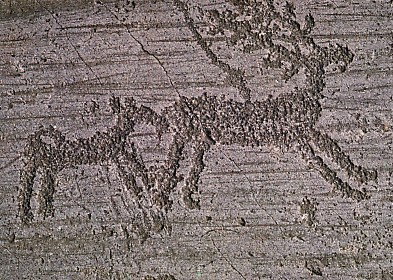The inland northern areas of Italy (for example Turin, Milan, and Bologna) have a continental climate typically classified as Humid subtropical climate (Köppen climate classification Cfa), while the coastal areas of Liguria and the peninsula south of Florence generally fit the Mediterranean climate stereotype (Köppen climate classification CSa). The coastal areas of the peninsula can be very different from the interior, particularly during the winter months. The higher altitudes are cold, wet, and snowy. The coastal regions, where most of the large towns are located, have a typical Mediterranean climate with mild winters and hot and generally dry summers. The length and intensity of the summer dry season increases southwards (compare the tables for Rome, Naples, and Brindisi).
Between the north and south there can be a considerable difference in temperature, above all during the winter: in some winter days it can be -2 °C (29 °F) and snowing in Milan, while it is 12 °C (54 °F) in Rome and 22 °C (72 °F) in Cagliari. Temperature differences are less extreme in the summer.
The east coast of the peninsula is not as wet as the west coast, but is usually colder in the winter. The east coast north of Pescara is occasionally affected by the cold bora winds in winter and spring, but the wind is less strong here than around Trieste. During these frosty spells from E-NE cities like Rimini, Ancona, Pescara and the entire eastern hillside of the Apennines can be affected by true "blizzards". The town of Fabriano, located just around 300 m in elevation, can often see 0.5–0.6 m of fresh snow fall in 24 hours during these episodes.
On the coast from Ravenna to Venice and Trieste, snow falls more rarely: during cold spells from east, the cold can be harsh but with bright skies; while, during the snowfalls that affects Northern Italy, the Adriatic coast can see a milder Sirocco wind which makes snow turn to rain—the mild effects of this wind often disappear just a few kilometres inside the plain, and sometimes the coast from Venice to Grado sees snow while it is raining in Trieste, the Po mouths and Ravenna. Rarely, the city of Trieste may see snow blizzards with north-eastern winds; in the colder winters, the Venice Lagoon may freeze, and in the coldest ones even enough to walk on the ice sheet.
Summer is usually more stable, although the northern regions often have thunderstorms in the afternoon/night hours and some grey and rainy days. So, while south of Florence the summer is typically dry and sunny, in the north it tends to be more humid and cloudy. Spring and Autumn weather can be very changeable, with sunny and warm weeks (sometimes with Summer-like temperatures) suddenly broken off by cold spells or followed by rainy and cloudy weeks.
The least number of rainy days and the highest number of hours of sunshine occur in the extreme south of the mainland and in Sicily and Sardinia. Here sunshine averages from four to five hours a day in winter and up to ten or eleven hours in summer. In the north precipitation is more evenly distributed during the year, although the summer is usually slightly wetter. Between November and March the Po valley is often covered by fog, especially in the central zone (Pavia, Piacenza, Cremona and Mantua), while the number of days with lows below 0 °C is usually from 60 to 90 a year, with peaks of 100–110 days in the mainly rural zones[2]. Snow is quite common between early December and early March in cities like Turin, Milan and Bologna, but sometime it appears in late November or late March and even April. In the winter of 2005–2006, Milan received around 0.75–0.8 m of fresh snow, Como around 1 m, Brescia 0.5 m, Trento 1.6 m, Vicenza around 0.45 m, Bologna around 0.30 m, and Piacenza around 0.8 m.
Summer temperatures are often similar north to south. July temperatures are 22–24 °C north of river Po, like in Milan or Venice, and south of river Po can reach 24–25 °C like in Bologna, with fewer thunderstorms; on the coasts of Central and Southern Italy, and in the near plains, mean temperatures goes from 23 °C to 27 °C. Generally, the hottest month is August in the south and July in the north; during these months the thermometer can reach 38–42 °C in the south and 32–35 °C in the north; Sometimes the country can be split as during winter, with rain and 20–22 °C during the day in the north, and 30 °C to 40 °C in the south; but, having a hot and dry summer does not mean that Southern Italy will not see rain from June to August.
The coldest month is January: the Po valley's mean temperature is between -1 °C and 1 °C, Venice 2–3 °C, Trieste 4 °C, Florence 5–6 °C, Rome 7–8 °C, Naples 9 °C, and Cagliari 12 °C. Winter morning lows can occasionally reach -30 °C to -20 °C in the Alps, -14 °C to -8 °C in the Po valley, -7 °C in Florence, -4 °C in Rome, -2 °C in Naples and 2 °C in Palermo. In cities like Rome and Milan, strong heat islands can exist, so that inside the urban area, winters can be milder and summers more sultry.
On some winter mornings it can be just -3 °C in Milan's Dome plaza while -8 to -9 °C in the metropolitan outskirts, in Turin can be just -5 °C in the city centre and -10° to -12 °C in the metropolitan outskirts. Often, the largest snowfalls happen in February, sometime in January or March; in the Alps, snow falls more in autumn and spring over 1500 m, because winter is usually marked by cold and dry periods; while the Apennines see many more snow falls during winter, but they are warmer and less wet in the other seasons.
Both the mountain chains can see up to 5–10 m of snow in a year at 2000 m; on the highest peaks of the Alps, snow may fall even during mid summer, and glaciers are present.
The record low is -45 °C in the Alps, and -29.0 °C near sea level (recorded on January 12, 1985 at San Pietro Capofiume, hamlet of Molinella, in the Province of Bologna), while in the south cities like Catania, Foggia, Lecce or Alghero have experienced highs of 46 °C in some hot summers.
Climates found in Italy.
Mediterranean climate Csa
It's found in all the coastal areas, excluding the north-eastern area, which fits a Humid subtropical climate. The winter average vary from 6°C, in the northern areas, to 11 - 14°C in the southern islands. During the summer, averages near 23°C in the north (Liguria), and sometimes reaching 26 - 28°C in the south. Precipitations mostly during the winter. Snowfalls are rare and usually very light in the north, and almost never happen in the south. Summers are dry and hot. Main cities: Cagliari, Palermo, Naples, Rome, Genoa, Pescara.
Mediterranean mild climate Csb
Inland and at medium and high quotes in southern Italy, around 1000 meters. It's similar to the usual mediterranean climate, the summers are dry and the winters wetter, but the temperatures are lower in both seasons - Around 3 or 5°C in the winter, and between 17 and 21°C in the summer. Snowfalls are more usual. Main cities and towns: Potenza, Prizzi.
Humid subtropical climate Cfa
It's found in all the Po and Adige's valleys in the north until low inland central and southern Italy. It's marked by the termical amplitude. Winters in these areas are usually colder than winters in higher latitudes, as in Paris or London,but summers are hot, almost as hot as in southern Italy. The precipitation is higher and there is no dry season. Snow is frequent from December until February. Average temperatures around 0 or 1°C in the winter and 22 or 24°C in the summer. Main cities: Milan, Venice, Verona, Turin, Bologna.
Oceanic climate Cfb
At midlands in the Apennines and in the alpine foothills. It is wetter and colder than the subtropical climate. It can have mild winters, around 1 or 3°C, mostly in the Apennines, or severe winters, between -3 or 0 at the board line between oceanic and continental climate. Summers between 17 and 21°C Main cities and towns: Aosta, Campobasso, L'Aquila, Cuneo, Sondrio, Amatrice - mild. Belluno, Breno, Feltre - severe.
Humid continental climate Dfb
It's found in the Alps, around 1200 meters in the western side, or around 1000 in the eastern side. It's marked by low winter averages (between -7 and -3°C) and mild summers, with temperatures average from 13 until 18°C. Snow is usual from early November until March or early April. Main towns - Brusson, Gressoney-Saint-Jean, Aprica, Vermiglio, Mazzin, Santo Stefano di Cadore, Claut, Resia.
Cold continental climate Dfc
In the alpine valley around 1600 - 1800 meters. The winters are very cold, averages between -12 and -5°C, and summers are cool, usually around 12°C. Main towns and villages in this area: Livigno, Chamois, Misurina, Predoi, Rhêmes-Notre-Dame.
Tundra climate ET
Above the tree line in the Alps. All the months with average below 10°C. Villages with this climate: Cervinia, Sestriere, Trepalle.
http://en.wikipedia.org/wiki/Climate_of_Italy













 Italy is a mountainous country, with the Alps as the northern boundary and the Apennine Mountains forming the backbone of the peninsula, but in between the two lies a large plain in the valley of the Po, the largest river in Italy, which flows 652 km (405 miles) eastward from the Cottian Alps to the Adriatic.
Italy is a mountainous country, with the Alps as the northern boundary and the Apennine Mountains forming the backbone of the peninsula, but in between the two lies a large plain in the valley of the Po, the largest river in Italy, which flows 652 km (405 miles) eastward from the Cottian Alps to the Adriatic. There are also a few active volcanoes in Italy: Etna, the largest active volcano in Europe; Vulcano; Stromboli; and Vesuvius, the only active volcano on the mainland of Europe.
There are also a few active volcanoes in Italy: Etna, the largest active volcano in Europe; Vulcano; Stromboli; and Vesuvius, the only active volcano on the mainland of Europe.















